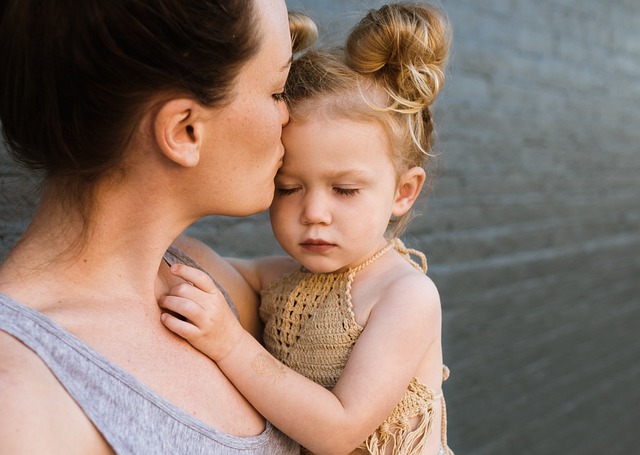After a divorce, clear and consistent communication is vital for successful co-parenting. Co-parents should agree on methods and platforms to share details about their child's well-being, school activities, and medical appointments, with regular check-ins promoting a child-focused approach. Effective co-parenting involves setting healthy boundaries, managing conflicts professionally, and prioritizing the emotional needs of children, using suitable communication tools like face-to-face conversations, secure apps, email, or video calls based on the child's age and preferences. Key to success are consistent check-ins, shared parenting plans, compromise, empathy, and maintaining a cooperative atmosphere for the child's best interests.
After a divorce or separation, effective co-parenting is crucial for a child’s well-being. This article provides essential tips and strategies to navigate shared parenting plans successfully. We explore the importance of open communication channels, ensuring consistent updates through regular check-ins. Child-focused approaches prioritize understanding your child’s perspective and fostering positive relationships. Learn to address conflicts constructively and adapt to changes flexibly. Discover the balance between personal boundaries and collaborative decision-making for a healthy co-parenting dynamic, ultimately benefiting both parents and the child.
Establishing Clear and Consistent Communication Channels
After a divorce, establishing clear and consistent communication channels is one of the most effective co-parenting tips. Co-parents should agree on specific methods and platforms for sharing information about their child’s well-being, school activities, medical appointments, and other crucial details. Shared parenting plans that include detailed communication protocols help ensure that both parents are equally involved and informed. Regular check-ins and open dialogue foster a child-focused co-parenting approach, minimizing confusion and stress for the child.
Navigating co-parenting challenges often requires setting healthy boundaries to maintain respect and professionalism. Co-parents should establish guidelines for how they communicate with each other and when, especially regarding decisions related to the child’s upbringing. Consistent communication also aids in managing conflicts and ensuring both parents are aligned on crucial issues. Effective co-parenting strategies involve creating a structured environment where regular updates and collaborative problem-solving become the norm, promoting stability and harmony in the shared parenting schedule.
– The importance of open lines of communication
Open lines of communication are paramount in successful co-parenting after divorce. When parents maintain a constant, honest dialogue, it fosters an environment of trust and understanding, benefiting both the parents and their children. This is especially crucial during the initial separation phase and beyond, as shared parenting plans require regular updates and adjustments to accommodate everyone’s needs. Effective co-parenting strategies rely heavily on clear communication to navigate challenges, ensuring that decisions regarding schedules, activities, and boundaries are aligned with the child’s best interests.
Child-focused co-parenting means prioritizing the emotional well-being of your children above all else. To achieve this, establish healthy co-parenting boundaries while maintaining open lines of communication. Regular check-ins, whether through face-to-face meetings or digital means, allow for the exchange of vital information about school, extracurriculars, and any changes in routines. This continuous dialogue enables parents to coordinate their efforts effectively, ensuring consistency in parenting, even when apart.
– Choosing the right communication methods for different situations
Choosing the right communication methods is essential for effective co-parenting after divorce. Different situations call for different approaches. For instance, when discussing urgent matters related to a child’s well-being, immediate face-to-face conversations or secure messaging apps are ideal. These methods ensure prompt responses and allow for clear expression of concerns. On the other hand, non-urgent issues can be addressed through regular check-ins via email or scheduled phone calls. This approach provides structured communication while allowing both co-parents to reflect on their thoughts.
Implementing a child-focused perspective in communication is crucial. Co-parents should prioritize the child’s needs and preferences when deciding on communication channels. For example, younger children might benefit from simple, visual aids or even joint video calls where they can see and interact with both parents simultaneously. For older kids and teens, who may prefer more autonomy, text messages or social media platforms could be suitable, allowing them to communicate at their comfort level while still maintaining open lines of communication between the co-parents.
– Setting regular check-in times for updates and discussions
Effective communication is the cornerstone of successful co-parenting after divorce. Establishing regular check-in times allows co-parents to share updates, discuss important decisions, and plan for the child’s well-being. Setting a consistent schedule—whether it’s weekly or biweekly meetings—ensures that both parents are on the same page regarding school activities, appointments, and changes in routines. This structured approach fosters transparency and collaboration, two key elements in a child-focused co-parenting strategy.
During these check-ins, focusing on what’s best for the child should be the top priority. Co-parents should aim to maintain healthy boundaries while also nurturing a cooperative environment. Navigating co-parenting challenges requires compromise and empathy. By prioritizing open communication and adhering to shared parenting plans, co-parents can create a stable and supportive system that benefits both themselves and their children during this transition period.
Effective co-parenting requires a strong foundation of open and consistent communication. By establishing clear channels, choosing the right methods for different situations, and setting regular check-ins, co-parents can navigate challenges and foster a child-focused approach. Maintaining healthy boundaries and adhering to shared parenting plans are crucial for creating stability and continuity in a post-divorce environment. These strategies empower co-parents to work together, ensuring their children thrive in a loving and supportive home.
